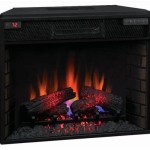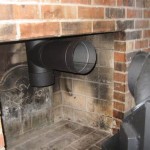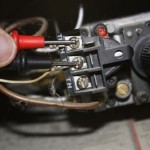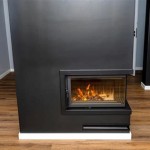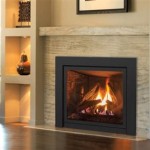Fuel Burning Fireplaces: A Comprehensive Guide
Fuel-burning fireplaces, a timeless symbol of warmth and comfort, offer a unique charm and ambiance to any home. From the crackling flames to the captivating scent of burning wood, these traditional hearths continue to enchant and delight homeowners. However, understanding the various aspects of fuel-burning fireplaces is crucial for maximizing their benefits and ensuring safe operation. This comprehensive guide aims to provide a detailed overview of these fireplaces, encompassing their types, advantages, disadvantages, and essential considerations.
Types of Fuel Burning Fireplaces
Fuel-burning fireplaces are broadly categorized based on the type of fuel they utilize. The most common types include:
Wood Burning Fireplaces
Wood burning fireplaces are the most traditional and widely recognized type. They utilize readily available firewood, offering a natural and authentic experience. However, they require regular maintenance, including cleaning and ash removal, and can produce significant smoke and particulate matter.
Gas Fireplaces
Gas fireplaces offer convenience and efficiency. They utilize natural gas or propane, providing instant ignition and consistent heat output. Moreover, they require minimal maintenance and produce less smoke and ash compared to wood-burning counterparts. However, they may not offer the same authentic experience as wood-burning fireplaces.
Pellet Fireplaces
Pellet fireplaces are highly efficient and environmentally friendly. They utilize compressed wood pellets as fuel, providing consistent heat with minimal ash production. These fireplaces are typically automated and require less manual intervention. However, they may have higher initial costs and require a dedicated pellet storage space.
Advantages of Fuel Burning Fireplaces
Fuel-burning fireplaces offer numerous advantages, making them desirable features in many homes.
Aesthetic Appeal
Fireplaces add a touch of elegance and charm to any room. Their presence creates a cozy and inviting atmosphere, enhancing the visual appeal of the space.
Heating Benefits
Fuel-burning fireplaces provide a supplemental heating source, complementing the primary heating system. They can significantly reduce heating costs, especially during colder months.
Unique Ambiance
The crackling flames and scent of burning fuel create a unique and captivating ambiance. Fireplaces offer a sense of relaxation and tranquility, fostering a warm and inviting atmosphere.
Disadvantages of Fuel Burning Fireplaces
While fuel-burning fireplaces offer numerous benefits, they also have certain drawbacks that should be considered.
Safety Concerns
Fuel-burning fireplaces require proper installation and maintenance to ensure safe operation. Incorrect installation or negligence can lead to fire hazards, smoke inhalation, and other safety risks.
Environmental Impact
Fuel-burning fireplaces, particularly wood-burning ones, can contribute to air pollution. They release smoke and particulate matter into the atmosphere, impacting air quality and contributing to climate change.
Maintenance Requirements
Fuel-burning fireplaces require regular maintenance, including cleaning, ash removal, and fuel replenishment. Failure to maintain the fireplace can lead to inefficient operation, safety hazards, and reduced lifespan.
Essential Considerations for Fuel Burning Fireplaces
Before installing a fuel-burning fireplace, several essential considerations should be addressed:
Fuel Availability
Ensure the availability and accessibility of the chosen fuel. Wood-burning fireplaces require readily available firewood, while gas fireplaces need a natural gas or propane supply.
Installation Requirements
Consult with qualified professionals for proper installation to ensure compliance with local building codes and safety regulations.
Maintenance Needs
Consider the maintenance requirements and ensure you are willing and able to perform regular cleaning and upkeep to maintain optimal performance and safety.
Environmental Impact
Evaluate the environmental impact of the chosen fuel type. Consider options that minimize smoke and particulate matter emissions, contributing to cleaner air quality and a healthier environment.
Fuel-burning fireplaces offer a unique blend of warmth, charm, and ambiance, providing a timeless appeal to homes. By understanding the various types, advantages, disadvantages, and essential considerations, homeowners can make informed decisions about installing and operating these traditional hearths safely and effectively.

Gas Burning Fireplaces Sierra Hearth And Home

How To Use And Maintain Your Multi Fuel Stove Chesneys

Benefits Popularity Of Gas Fireplaces Stoves And Fireplace Inserts

Stoves Wood Gas And Pellet Sierra Hearth Home

Gas Logs Vs Wood Burning Fireplaces Dc Area Fireplace Service

Stoves Wood Gas Pellet Lopi

Traditional Wood Burning Fireplaces Multi Fuel Stovax Gazco

Gas Burning Stove Installation Service Provider More In Wi
:max_bytes(150000):strip_icc()/ventless-gas-fireplaces-4160746-hero-f9d4bdcd9bd446eb84406de306f790ba.jpg?strip=all)
How To Pick Out A Ventless Gas Fireplace

Wood Burning Fireplaces Heaters And Solid Fuel Appliances
Related Posts

